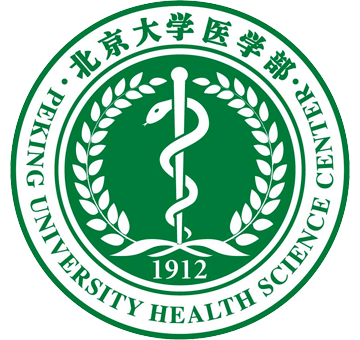A decade of friendship: JI leaders gather for 10-year anniversary celebration
A global pandemic changed the venue, but couldn’t stop Michigan Medicine and Peking University Health Science Center (PKUHSC) from celebrating their longstanding partnership.
Almost 200 faculty and leaders from both the institutions gathered online recently for a webinar marking the 10-year anniversary of their unique collaboration. Established in 2010, the Michigan Medicine-PKUHSC Joint Institute (JI) for Translational and Clinical Research has grown over the years to comprise dozens of collaborative research projects spanning numerous disciplines, as well as ongoing education and exchange programs.
COVID-19 forced the cancellation of an annual in-person symposium (typically held each fall) in favor of a virtual event.
“At this moment of extraordinary challenge, holding our JI celebration shows a dedication and willingness to respond to the challenge together,” said PKUHSC President and Joint Institute co-director Qimin Zhan, M.D. “The pandemic may have prevented us from meeting face to face, but it will never stop our concerted effort to improve the health and lives of people.”
‘Our most important collaborations will be with China’
With participants in the US and China, the September 24 event featured U-M President Mark Schlissel, MD, PhD, and Peking University President Ping Hao, PhD, and other institutional leaders. Invited guests Victor Dzau, MD, President of the National Academy of Medicine, and Roger Glass, MD, PhD, Director of the NIH Fogarty International Center, for a panel discussion on the value of scientific collaborations between the US and China.
“I believe our most important collaborations in biomedical research going forward will be with China,” Glass said. “This (Joint Institute) has demonstrated the necessary transparency, synergy, and data sharing that are vital to success but also difficult on an international level. You’ve done it well and deserve congratulations.”
The meeting was an opportunity to celebrate the successes of the past decade – 59 joint research projects, 86 publications, more than $25 million in extramural funding in the US alone – as well as look ahead to the future of the partnership. UMMS Senior Associate Dean Joseph Kolars, MD, who serves as co-director of JI, outlined the goals for the next decade.
“We’re pleased with what we’ve done in phase one, developing the trust and some of the machinery to partner effectively,” said Kolars. “Going forward into the next phase, it is important for us to look for opportunities that we can’t do alone – things that are beyond what an individual could do alone or two partner scientists could do alone.”
Expanding the scope of partnerships
One such goal is to expand the JI research beyond explorations of individual diseases into theme-based areas – precision medicine, cancer, metabolic diseases – with multidisciplinary teams of investigators tackling larger, more complex projects. Another objective to create opportunities for the JI research teams to partner with private industry in one or both countries.
Professor of Hepatology and UMMS Assistant Dean for Clinical Research Anna Lok, MD has already leveraged some of her hepatitis research through the JI into valuable partnerships in the private sector, securing $1.5 million from Bristol-Myers Squibb to extend her work on incidence and risk factors for hepatitis C virus related cirrhosis and hepatocellular carcinoma.
“We received that funding largely because we were collaborating with China. The fact that we were studying two parallel cohorts (in the US and in China) and comparing and contrasting was appealing to them,” Lok said. “That led to funding on both sides, so either one of us approaching industry alone might not have led to support. The collaboration was what got them interested.”
Likewise, a JI team of investigators led by UMMS Professor of Nephrology Mattias Kretzler and Director of the Peking University Institute of Nephrology Minghui Zhao paved the way this summer for a partnership between Kretzler’s team and a diagnostics company that uses artificial intelligence for early kidney disease detection.
A JI investigation into the relationship between air pollution and heart disease led not only NIH funding but also engagement with a World Health Organization task force on global air pollution interventions.
Investigations like this that connect physical medicine to environmental health could be an important area of growth for future collaboration between China and the United States, Glass suggested.
“Issues of global health, environmental health, and climate change are critical,” he said. “How do we as two major scientific powerhouses use our science and our health science to improve health going forward?”
Danger and opportunity
In the near term, COVID-19, while it has impeded face-to-face interactions between JI partners, has also provided opportunities for research as teams of researchers have been launching new projects or shifting ongoing collaborations to respond to the pandemic. Ning Zhang, PhD, Vice President of PKUHSC and Associate Director of the JI, noted that ‘crisis’ is represented in Mandarin by writing two characters side by side.
“One word is ‘danger’ but the other is ‘opportunity’. The COVID-19 outbreak has been a test of this partnership,” Zhang said. “The opportunity we see is that our collaboration endures in the ongoing crisis. We think this challenge provides an opportunity for the next phase of our collaboration.”
PKUHSC physicians, including several who’d worked in Wuhan, the center of the initial outbreak, arranged a conference call in March with Michigan Medicine leaders to share their experience treating COVID patients ahead of the first significant outbreaks in Michigan. PKUHSC leaders also arranged for much need PPE donations for Michigan Medicine in the spring when supply chain disruptions caused worldwide shortages.
“We’re living in a time where it may seem easier to focus on barriers to collaboration rather than to do the work of building bridges,” said U-M President Schlissel. “But we are showing the world what can happen through academic collaboration, shared goals, and strong partnerships. The science we’ve created together has an enormous impact already. It’s inspiring to think of the accomplishments yet to come.”


